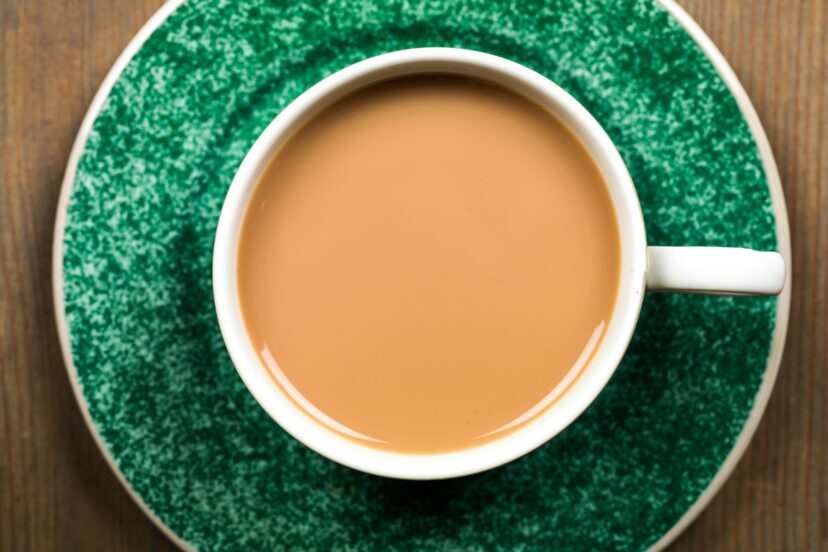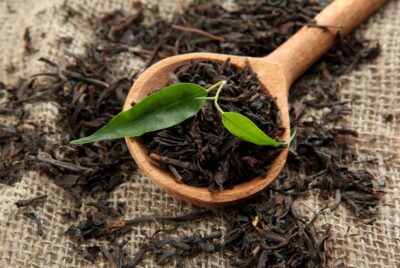Irish Tea: The Rich Tradition of Culture, Comfort and Health
Irish tea is more than just a beverage; it’s a cherished part of Irish culture and daily life. Let’s explore the history, unique characteristics, and cultural significance of this beloved drink.
10 Health Benefits of Irish Tea
1. Rich in Antioxidants
Irish tea contains high levels of antioxidants, particularly flavonoids, which help protect the body from oxidative stress and damage caused by free radicals. Antioxidants can reduce the risk of chronic diseases and promote overall health.
2. Heart Health
Regular consumption of tea can improve cardiovascular health. Studies have shown that the flavonoids in black tea can reduce the risk of heart disease by improving cholesterol levels, reducing blood pressure, and improving blood vessel function.
3. Improved Gut Health
The polyphenols in tea may help improve gut health by promoting the growth of good bacteria and inhibiting the growth of harmful bacteria. A healthy gut microbiome is crucial for overall health and can aid in digestion and nutrient absorption.
4. Enhanced Mental Alertness
The caffeine and L-theanine in Irish tea can improve mental alertness, concentration, and cognitive function. These compounds work together to provide a calming yet focused state, making it an excellent beverage for enhancing productivity and focus.
5. Bone Health
Some studies suggest that regular tea consumption may be linked to better bone density and strength. The flavonoids and other compounds in tea can help reduce the risk of osteoporosis and maintain bone health as you age.
6. Weight Management
Black tea, including Irish tea, can aid in weight management by boosting metabolism and improving fat oxidation. Drinking tea can also increase energy expenditure and help regulate blood sugar levels, which is beneficial for weight control and diabetes prevention.
7. Reduced Risk of Stroke
Consuming tea regularly has been associated with a lower risk of stroke. The antioxidants and other bioactive compounds in tea help improve blood flow and prevent the formation of blood clots, reducing the likelihood of stroke.
8. Oral Health
The polyphenols in Irish tea can inhibit the growth of bacteria that cause dental plaque and cavities. Additionally, tea contains fluoride, which strengthens tooth enamel and helps prevent dental issues.
9. Stress Reduction
Drinking tea can be a calming ritual that helps reduce stress and promote relaxation. The act of brewing and sipping tea, along with its compounds, can lower stress hormone levels and improve mood.
10. Immune Support
The antioxidants and other bioactive compounds in Irish tea can help boost the immune system, making it more effective at fighting off infections and illnesses.
How to Brew the Perfect Cup of Irish Tea
Essential Ingredients and Tools
To brew the perfect cup of Irish tea, you’ll need high-quality tea leaves, boiling water, a teapot, and your favorite cup. Optional additions include milk, sugar, or lemon.
Step-by-Step Brewing Guide
- Boil fresh water.
- Warm the teapot with a bit of hot water, then discard.
- Add one teaspoon of loose tea leaves per cup, plus one for the pot.
- Pour in the boiling water.
- Let it steep for 3-5 minutes.
- Pour the tea through a strainer into your cup.
- Add milk or sugar if desired.
How does the water quality affect the taste of Irish tea?
The quality of water used can significantly impact its flavor.
- Hard water, which is high in minerals, can make the tea taste dull or overly mineralized.
- Soft water, on the other hand, is considered ideal as it enhances the natural flavors of the tea without adding any extraneous tastes.
- Filtered or bottled water, is recommended for the best brewing results.
Should Milk be Added to the Cup First or Last?
The question of whether milk should be added to the cup first or last when making tea is a topic of long-standing debate among tea enthusiasts. Historically and culturally, there are different practices:
Milk First
• Historical Reason: Originally, milk was poured into the cup first to prevent the hot tea from cracking the fine bone china cups.
• Flavor Argument: Some believe that adding milk first helps in better mixing of milk with tea as the tea is poured, potentially leading to a more even texture and flavor distribution.
Milk Last
• Control Over Strength and Quantity: Adding milk last allows for better control over the strength and amount of milk in the tea, as you can see the color change and decide when it’s just right.
• Modern Preference: Most modern tea drinkers prefer to add milk last, especially if they are not using delicate china. This method is also recommended by many tea experts to better gauge the strength of the tea.
Scientific Perspective
Some scientific studies suggest that adding milk last might be better for preserving the beneficial antioxidants in tea. When milk is added to boiling hot water, it can affect the temperature and thus the steeping process, potentially reducing the effectiveness of tea’s antioxidants.
Summary: The choice often comes down to personal preference and tradition. In settings where traditional bone china is used, or where historical tea-drinking customs are upheld, milk first might be preferred. In more casual settings, or where the emphasis is on customizing the strength of the tea, milk last might be the method of choice.
A Brief History of Irish Tea
Origins and Introduction to Ireland
Tea was first introduced to Ireland in the early 18th century. At that time, it was a luxury item imported by the British East India Company. Initially, tea was consumed by the wealthy and elite, but it gradually became more accessible to the general population. The popularity of tea grew due to its association with British culture and its perceived health benefits.
Evolution Over Time
Over the years, Irish tea has evolved, with various blends and brands emerging, each offering its own unique take on this classic drink.
19th Century: Tea Becomes a Staple
By the mid-19th century, tea had become a staple in Irish households. The affordability of tea improved as it became more widely imported, and advancements in the tea trade made it more accessible to the masses. The Irish developed a preference for strong, robust teas, often blending Assam and Ceylon varieties to achieve a distinctive flavor.
20th Century: The Rise of Irish Tea Brands
The 20th century saw the rise of iconic Irish tea brands that remain popular today. Companies like Barry’s Tea and Lyons Tea began producing blends specifically catered to Irish tastes. Barry’s Tea, founded in 1901 in Cork, and Lyons Tea, established in the 1890s, became household names and helped cement tea’s place in Irish culture.
Tea in Irish Literature and Media
Tea is frequently mentioned in Irish literature, songs, and films, reflecting its importance in Irish society. It symbolizes comfort, community, and a sense of belonging. For instance, in James Joyce’s Ulysses, tea is a recurring motif, highlighting its role in everyday life.
Modern Day: Irish Tea Today
Today, tea remains a beloved beverage in Ireland, with the average Irish person consuming several cups a day. The tradition of drinking tea continues to thrive, with new blends and flavors emerging to cater to modern tastes. Despite changes in the tea market, the classic Irish breakfast tea blend remains a favorite.
Global Influence and Export of Irish Tea
Irish tea brands have also gained international recognition. Barry’s Tea and Lyons Tea are exported worldwide, allowing the Irish diaspora and tea enthusiasts globally to enjoy a taste of Ireland. The global influence of Irish tea reflects its enduring appeal and quality.
History Conclusion
The history of Irish tea is a testament to its enduring significance in Irish culture. From its introduction in the 18th century to its status as a beloved daily ritual, tea has become more than just a drink in Ireland; it’s a symbol of hospitality, comfort, and tradition. Whether enjoyed with friends, family, or alone, a cup of tea is a cherished part of life in Ireland.
The Unique Characteristics of Irish Tea
Blend and Flavor Profile
Irish tea is known for its robust, full-bodied flavor. It’s typically a blend of Assam and Ceylon teas, resulting in a rich, malty taste.
Traditional Preparation Methods for Irish Tea
The traditional method of preparing Irish tea involves using loose tea leaves, boiling water, and a good quality teapot. This method ensures a strong and flavorful brew.
The Cultural Significance of Tea in Ireland
Social Rituals and Traditions of Irish Tea
The social rituals and traditions surrounding Irish tea are deeply ingrained in the fabric of Irish culture, reflecting both the nation’s history and its communal values.
Tea as a Social Connector
Tea time is more than just a mid-day break; it’s a pivotal social event. It’s common for friends and family to gather over cups of tea, sharing news and stories. This tradition has been a way to strengthen bonds and maintain social connections across generations. The ritual of “putting the kettle on” as soon as guests arrive is a sign of hospitality and welcome, symbolizing an offering of warmth and companionship.
Afternoon Tea Tradition
Although the afternoon tea tradition is more commonly associated with English culture, it has also been adopted and adapted within Ireland, especially in the context of formal gatherings or in Irish hotels and cafes. These events are often elaborate, featuring a selection of fine teas accompanied by both savory and sweet snacks, including scones, sandwiches, and pastries.
Tea at Irish Weddings and Funerals
Tea plays a critical role in both Irish weddings and funerals, serving as a comfort drink that brings people together during times of celebration as well as in mourning. At weddings, serving tea is a gesture of hospitality towards guests, often complemented with a variety of foods. During funerals, tea is a comforting presence, offered to help soothe and offer solace to the bereaved.
Modern Adaptations
In contemporary Ireland, while the traditional rituals of tea drinking continue, there are modern adaptations that reflect global influences and the younger generation’s lifestyle. Specialty teas and international blends have been incorporated into the Irish tea culture, and cafes often serve variations like chai lattes, green teas, and herbal infusions alongside traditional Irish black tea.
Community and Tea Rooms
Tea rooms and cafes across Ireland serve as important communal spaces where people of all ages gather. These establishments play a crucial role in both urban and rural settings, acting as hubs for community life and social interaction.
This rich tapestry of social rituals and traditions around tea highlights its significance beyond just a beverage—it’s a vital cultural element that nurtures community spirit and continuity in Ireland.
Tea in Irish Literature and Music
Tea in Irish literature and music often symbolizes a sense of community, solace, or the simple pleasures of life. This motif has been a resonant theme, reflecting both everyday moments and pivotal life events.
Literature
Irish literature frequently features scenes where tea acts as a comforting presence, a catalyst for conversation, or a ritual that underscores character relationships and social settings. James Joyce, for example, in his epic Ulysses, integrates tea into his narrative as a familiar and ordinary comfort against the backdrop of a day filled with extraordinary events. This usage underscores tea’s role in daily Irish life and its presence during moments of introspection or social interaction.
Seamus Heaney, another luminary of Irish literature, often included mentions of tea in his poetry, using it as a symbol of warmth and hospitality. In his works, tea sometimes appears in scenes depicting family gatherings or in quiet, contemplative moments, highlighting its role in fostering familial bonds and personal reflection.
Music
In Irish music, tea often appears in lyrics that discuss domestic life or as a metaphor for warmth and welcome. Traditional and folk songs sometimes reference tea in the context of hospitality—offering a cup of tea to a visitor is synonymous with offering friendship and comfort.
Contemporary Irish musicians also continue to reference tea in their songs, maintaining this connection to traditional themes while situating them within modern-day narratives. These references not only evoke a sense of nostalgia but also reinforce the beverage’s enduring presence in Irish culture.
Cultural Significance
The recurring theme of tea in Irish cultural expressions like literature and music speaks volumes about its significance beyond just a beverage. It acts as a narrative device that enriches the cultural tapestry, offering insights into the values, traditions, and social norms of Ireland. Tea scenes help build a sense of authenticity and cultural continuity, illustrating how this simple drink is woven into the fabric of Irish life.
Through these artistic expressions, tea transcends its role as a mere refreshment to become a symbol of Irish identity and heritage, marking moments of joy, sorrow, hospitality, and the rhythm of daily life.
Pairing Irish Tea with Food
Classic Pairings
Irish tea pairs wonderfully with traditional foods like scones, soda bread, and biscuits. These combinations enhance the tea-drinking experience.
Modern Twist
For a modern twist, try pairing Irish tea with savory items like cheese or even chocolate. These unexpected pairings can create delightful flavor contrasts.
Tips and Hints for Making the Perfect Cup of Irish Tea:
Choose Quality Tea
Opt for high-quality tea brands like Barry’s Tea or Lyons Tea, which are renowned for their rich, robust blends specifically suited to Irish tastes.
Use Fresh Water
Always use fresh, cold water for boiling. Avoid reboiling water, as it can diminish the oxygen levels and affect the tea’s flavor.
Pre-Warm the Teapot
Rinse your teapot with hot water before adding the tea. This helps maintain the optimal brewing temperature.
Measure the Tea Properly
For loose tea leaves, use one teaspoon per cup plus one extra for the pot. For tea bags, use one per cup.
Correct Water Temperature
Black tea should be brewed with boiling water. Pour the water over the tea leaves or tea bags as soon as it reaches a rolling boil.
Steep Time for Irish Tea
Allow the tea to steep for 3-5 minutes. This allows the flavors to fully develop. Over-steeping can make the tea bitter.
Sweeteners for Irish Tea
If you prefer your tea sweetened, use sugar or honey to taste. Start with a small amount and adjust according to your preference.
Experiment with Blends
Try different blends of Irish tea to discover your favorite. Some popular options include Irish Breakfast Tea, which is a strong blend typically enjoyed in the morning.
Storing Irish Tea
Store your tea in an airtight container in a cool, dark place. This helps maintain its freshness and flavor.
Cleaning Your Teapot
Regularly clean your teapot to prevent residue build-up, which can affect the taste of your tea. Rinse with hot water and avoid using soap that can leave a lingering scent.
Pairing Irish Tea with Food
Irish tea pairs wonderfully with traditional Irish foods like scones, soda bread, and hearty breakfasts. You can also enjoy it with savory items like cheese or chocolate for a modern twist.
Experiment with different pairings to enhance your tea experience.
Enjoying the Ritual
Take time to enjoy the process of making and drinking tea. The ritual can be a relaxing and enjoyable part of your day.
Cold Brew for Iced Irish Tea
For a refreshing twist, try making cold-brewed Irish tea. Add loose tea or tea bags to cold water and let it steep in the fridge overnight.
Tea Accessories
Invest in good-quality tea accessories like a fine mesh strainer for loose leaves, a teapot with a built-in infuser, and a cozy to keep your teapot warm.
Blending Your Own Tea
If you’re adventurous, try blending your own tea. Mix different types of black tea or add herbs and spices like cinnamon or cloves for a unique flavor.
Mind the Caffeine
Remember that Irish tea contains caffeine. If you’re sensitive to caffeine or drinking tea late in the day, consider opting for a decaffeinated version.
By following these tips and tricks, you can enjoy a perfect cup of Irish tea, whether you’re starting your day or unwinding in the afternoon.
Final Thoughts
Irish tea holds a cherished spot in both the hearts and daily routines of those who drink it. Steeped in rich history and cultural traditions, Irish tea offers not only comfort but a profound sense of community and belonging. Whether enjoyed in solitude for a quiet moment of reflection or shared among friends, each cup offers a taste of Ireland’s heritage. As we continue to explore and celebrate this beloved beverage, remember that the simple act of brewing a pot can connect us to the past and each other. Irish tea isn’t just a drink; it’s a warm embrace from Ireland to the world.
FAQs
What makes Irish tea different from other teas?
Irish tea is known for its strong, robust flavor, typically a blend of Assam and Ceylon teas. It’s often enjoyed with milk.
Can I use tea bags instead of loose tea leaves?
Yes, tea bags can be used, though loose tea leaves often provide a richer flavor.
What is the difference between Irish Breakfast tea and English Breakfast tea?
Irish Breakfast tea typically has a stronger and more robust flavor compared to English Breakfast tea. This is because Irish Breakfast tea often contains a higher proportion of Assam tea, which is known for its bold, malty flavor. English Breakfast tea, on the other hand, usually features a balance of Assam, Ceylon, and Kenyan teas, making it slightly milder and more balanced.
Is Irish tea suitable for evening consumption?
Irish tea typically contains a significant amount of caffeine, as it is primarily made from black tea leaves. Therefore, it might not be the best choice for evening consumption if you are sensitive to caffeine or have trouble sleeping. However, if caffeine does not affect your sleep, or if you enjoy a cup of tea in the evening, it could be a comforting choice before bedtime. For those sensitive to caffeine, decaffeinated varieties are available that offer the same great taste without the stimulant effects.
Can Irish tea be used in recipes other than as a beverage?
Yes, Irish tea can be creatively used in various recipes to add a unique flavor. It is commonly used to infuse richness in baked goods, such as cakes and breads, where the robust flavor of the tea can complement sweet ingredients. Irish tea is also used in marinades for meats, providing a subtle depth of flavor that enhances the dish without overwhelming it.




